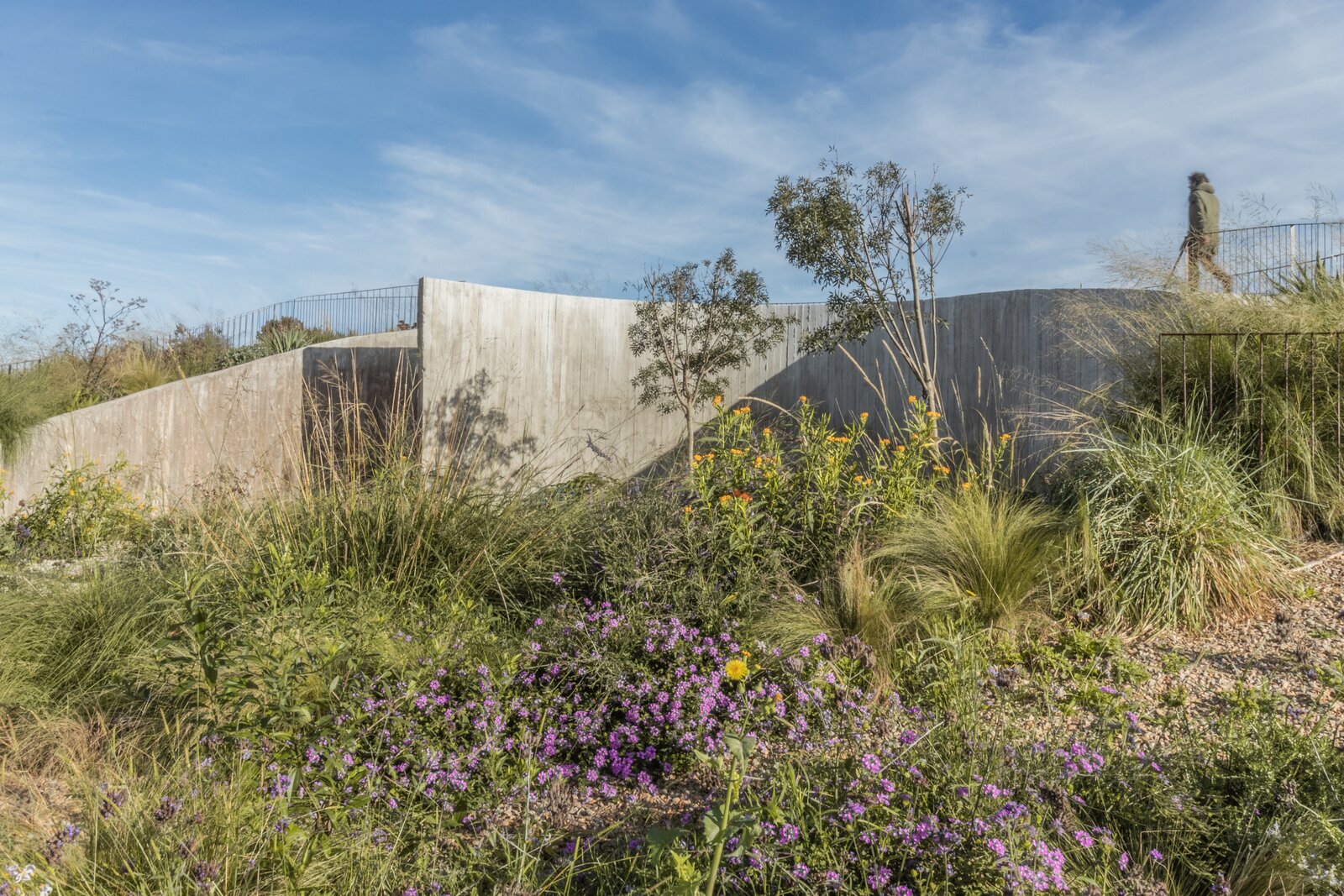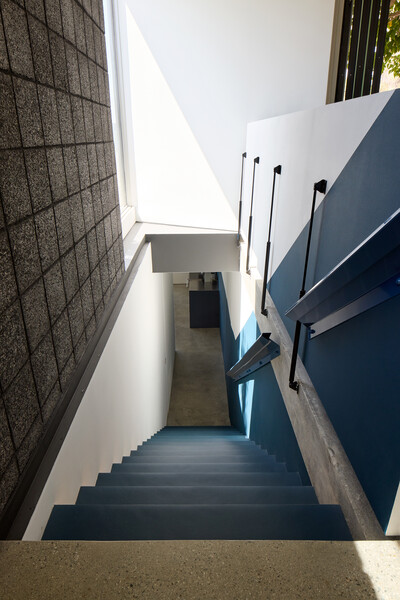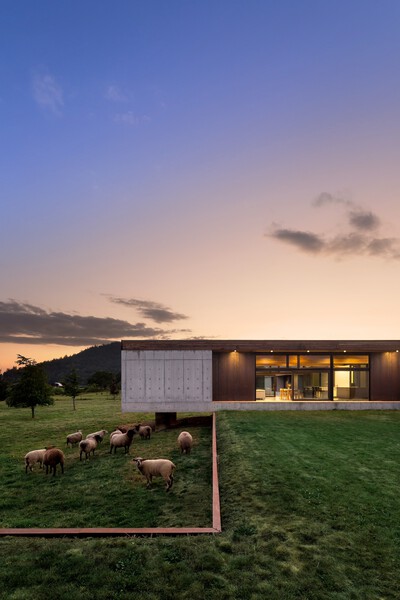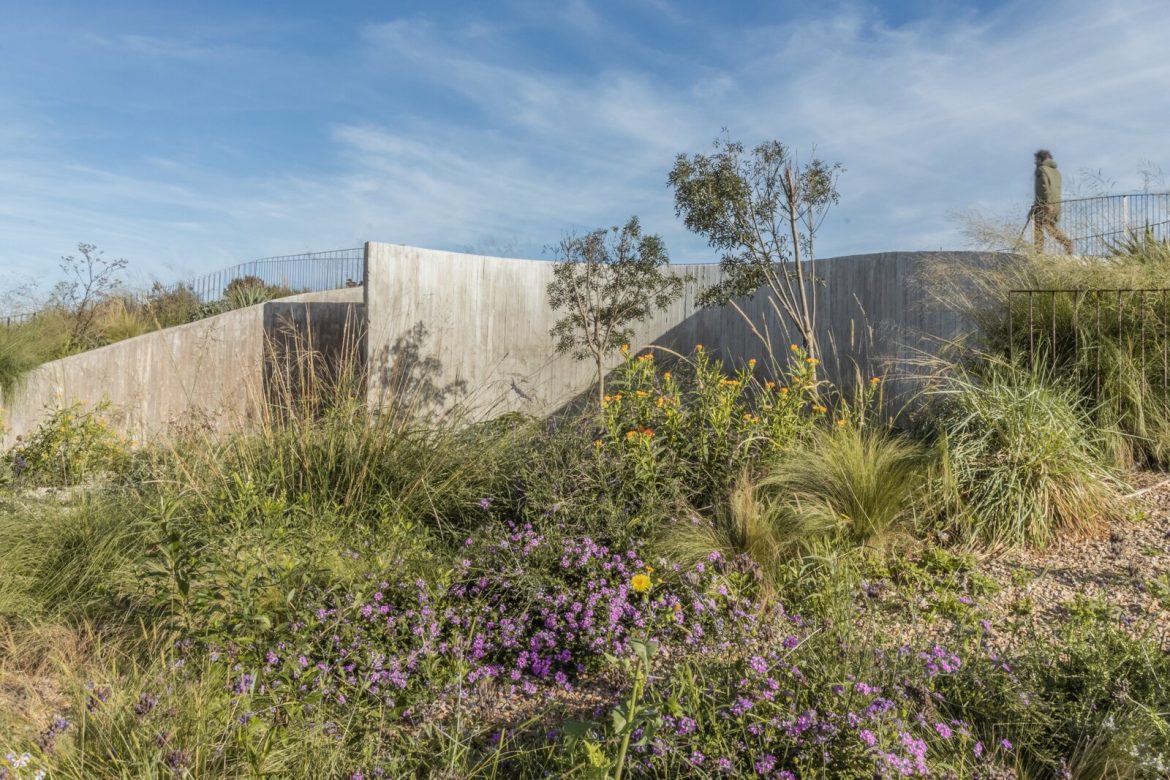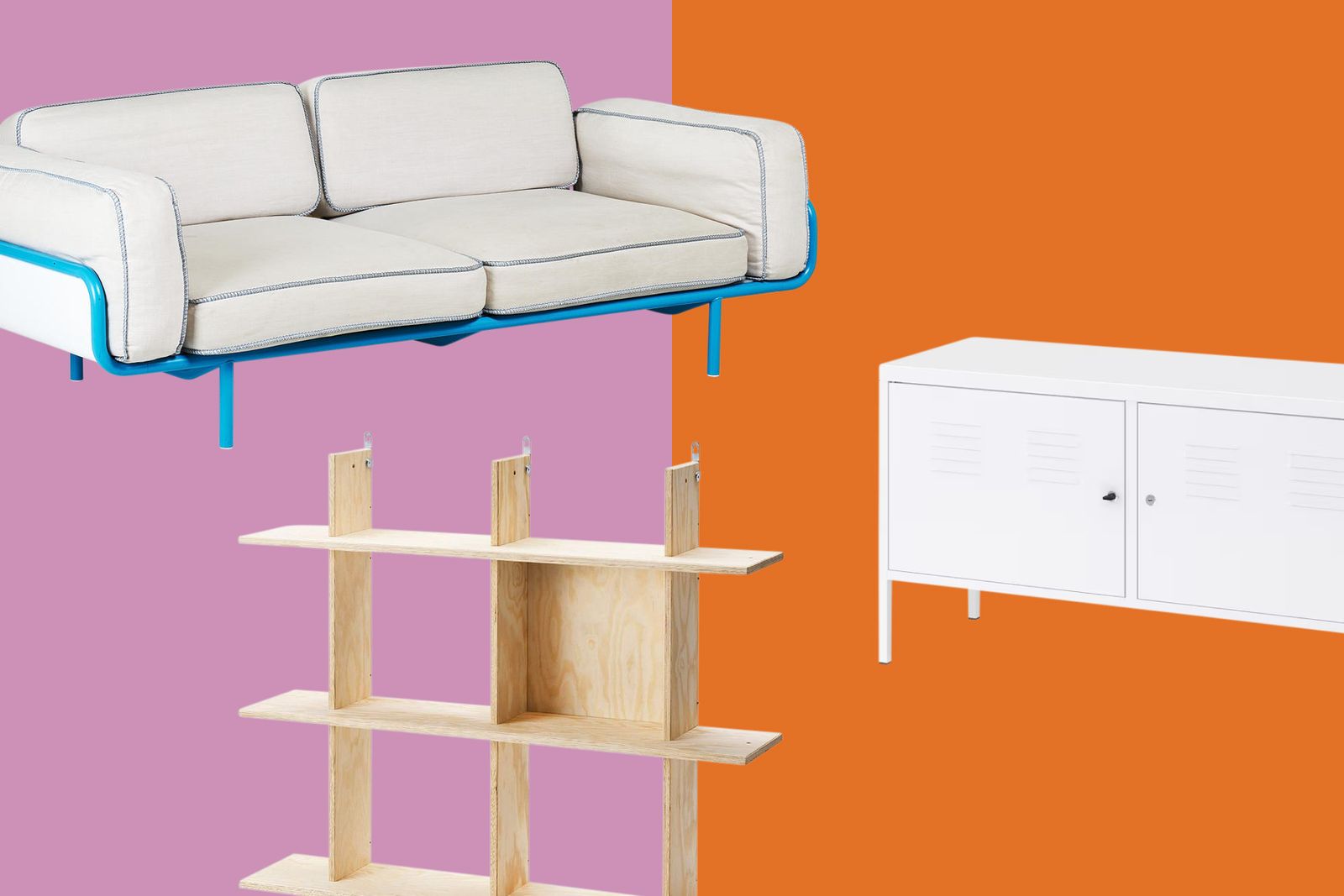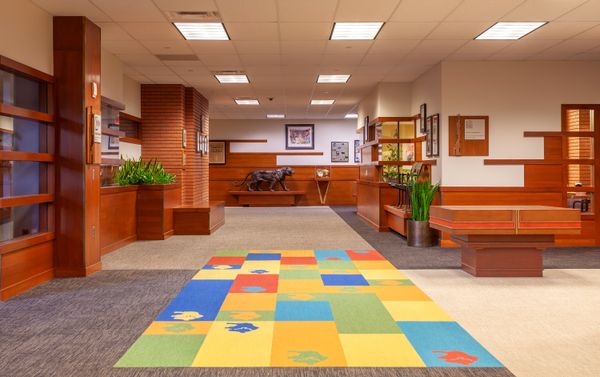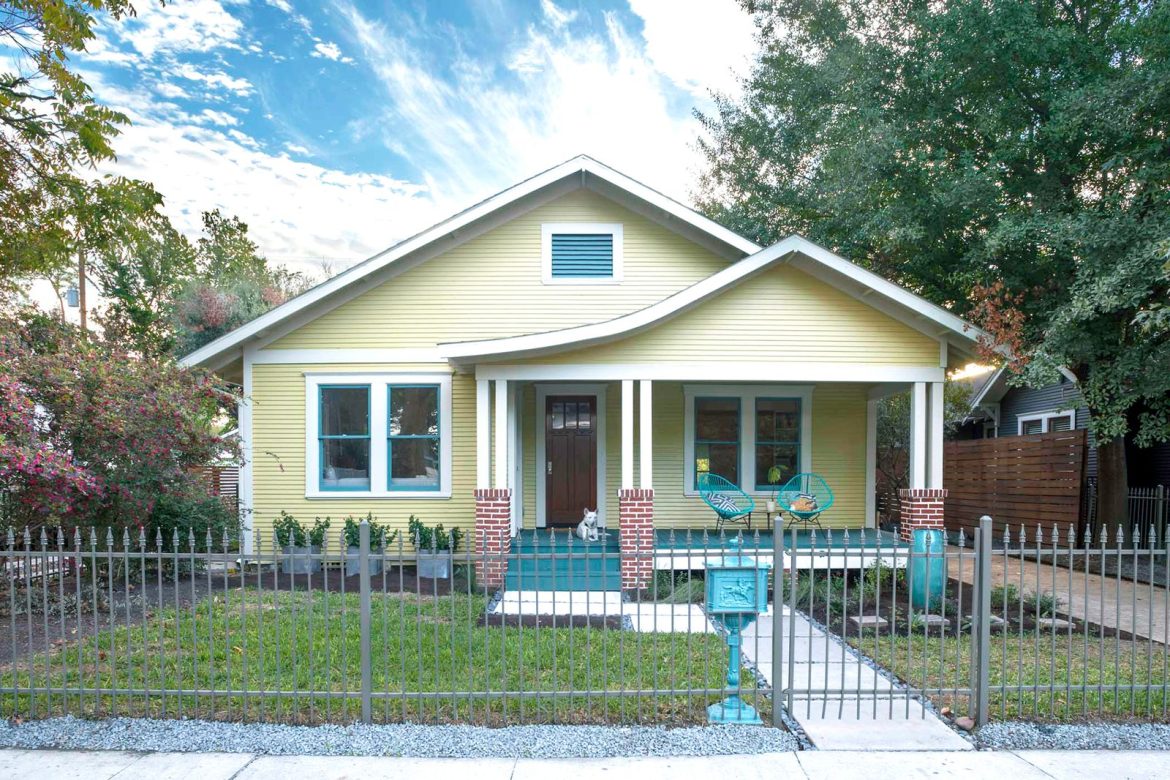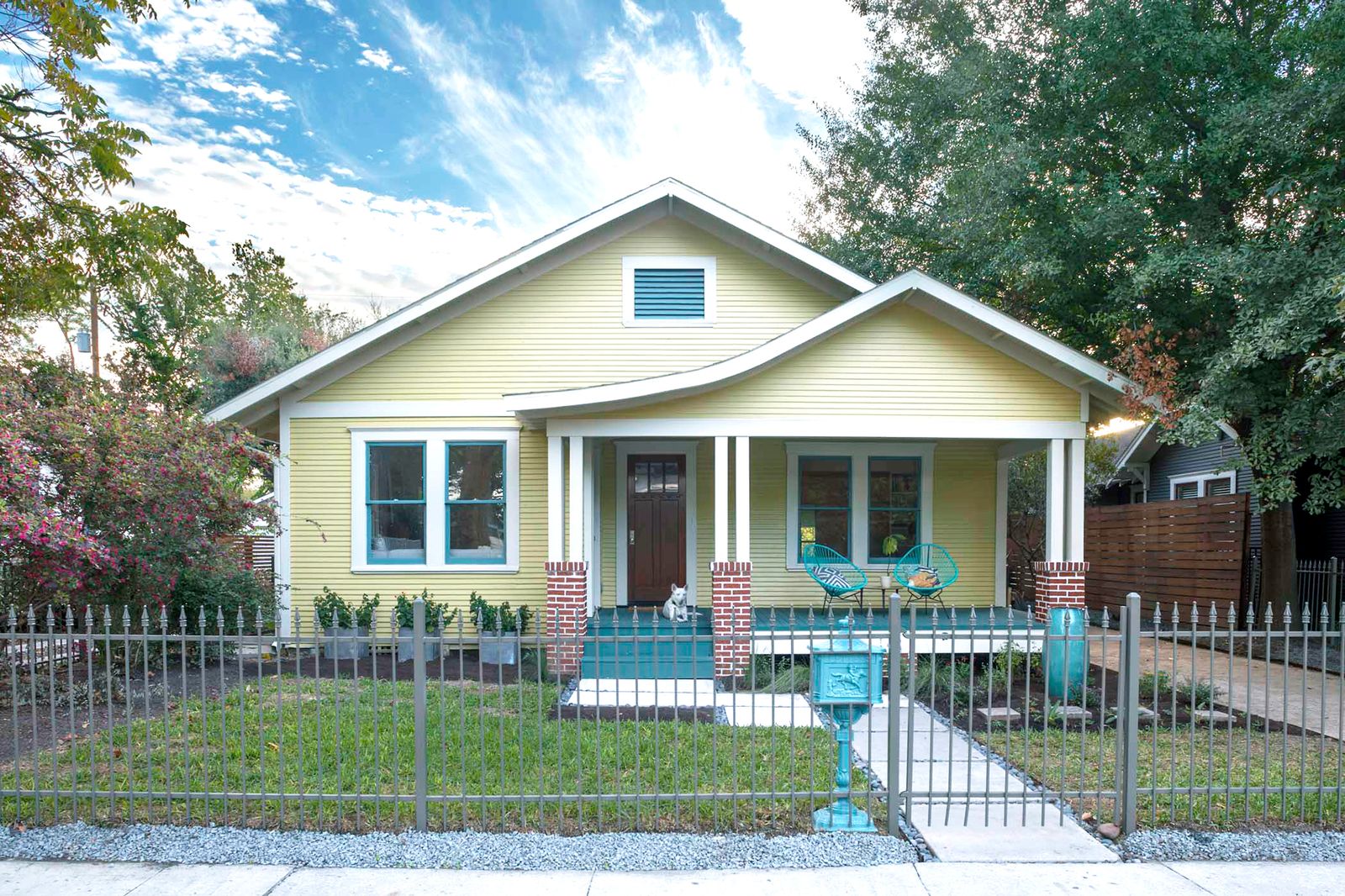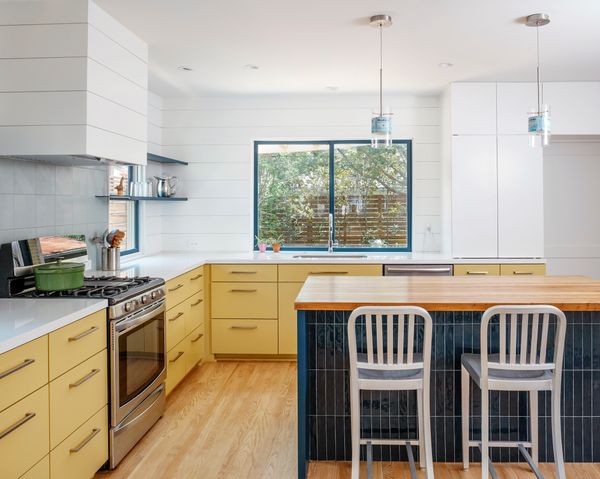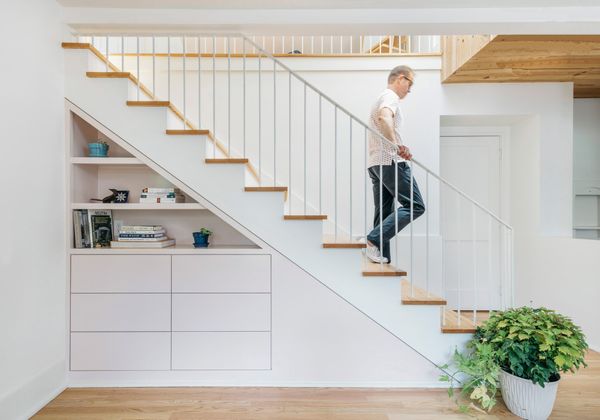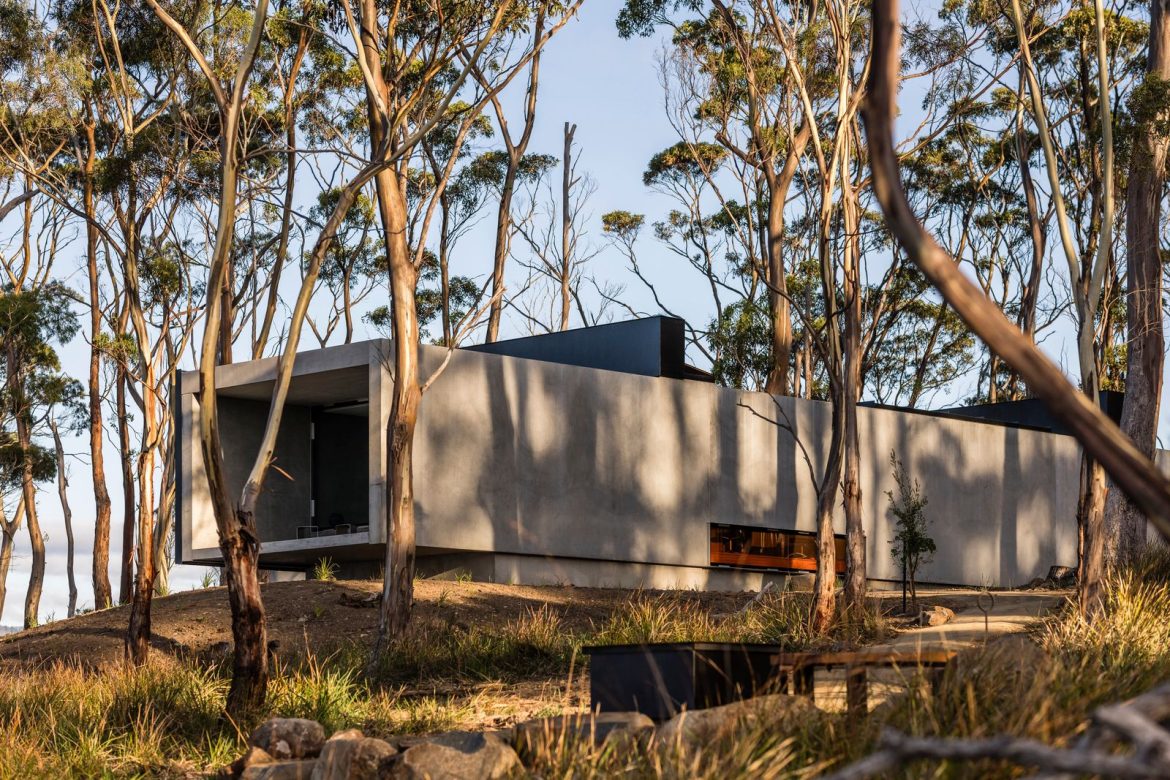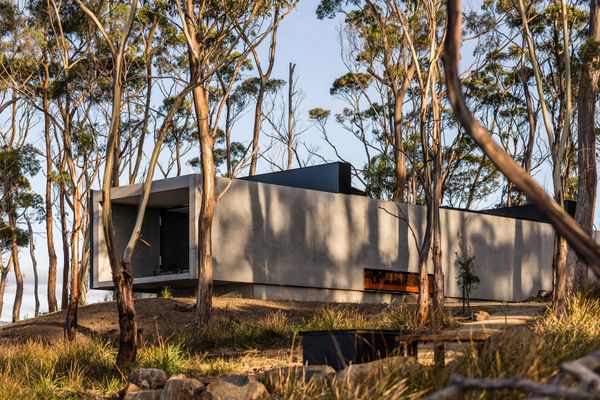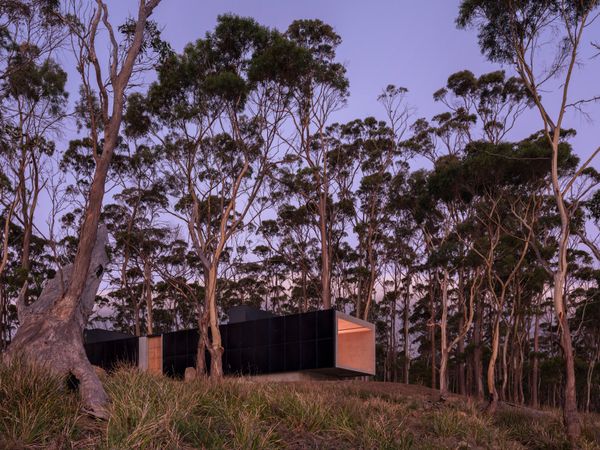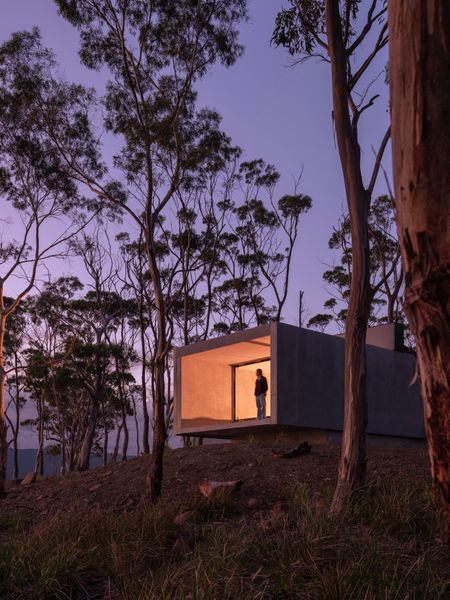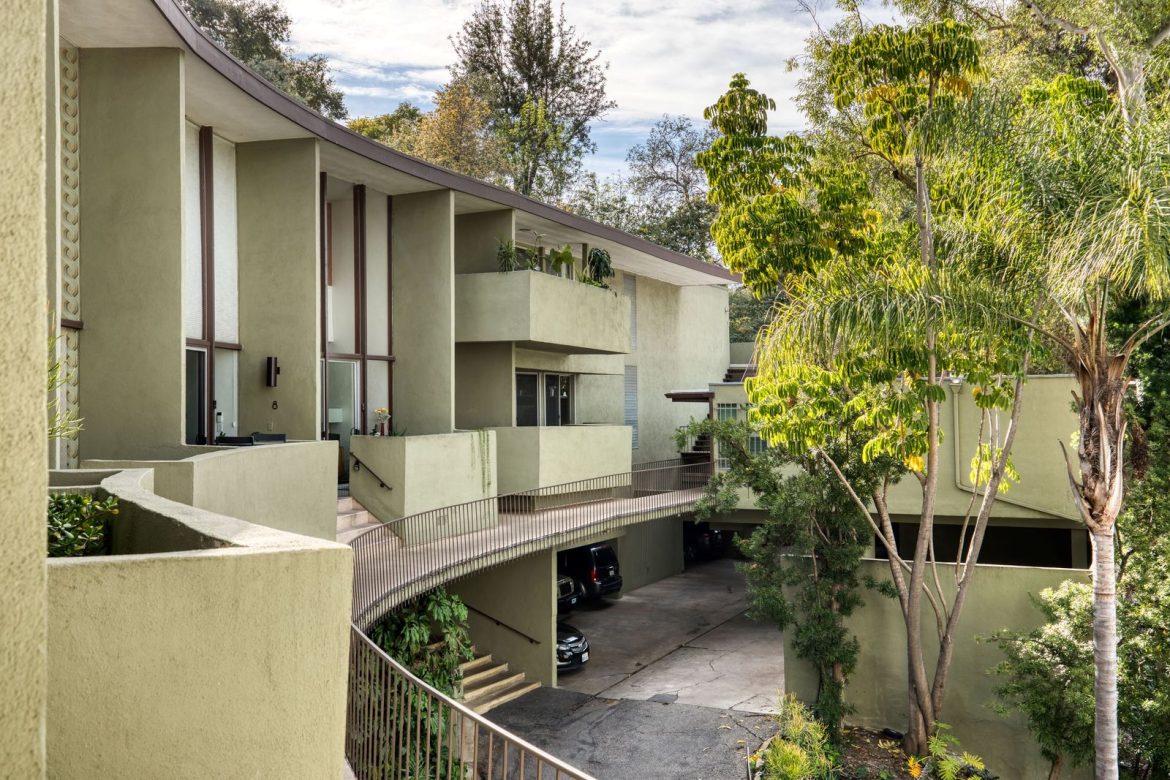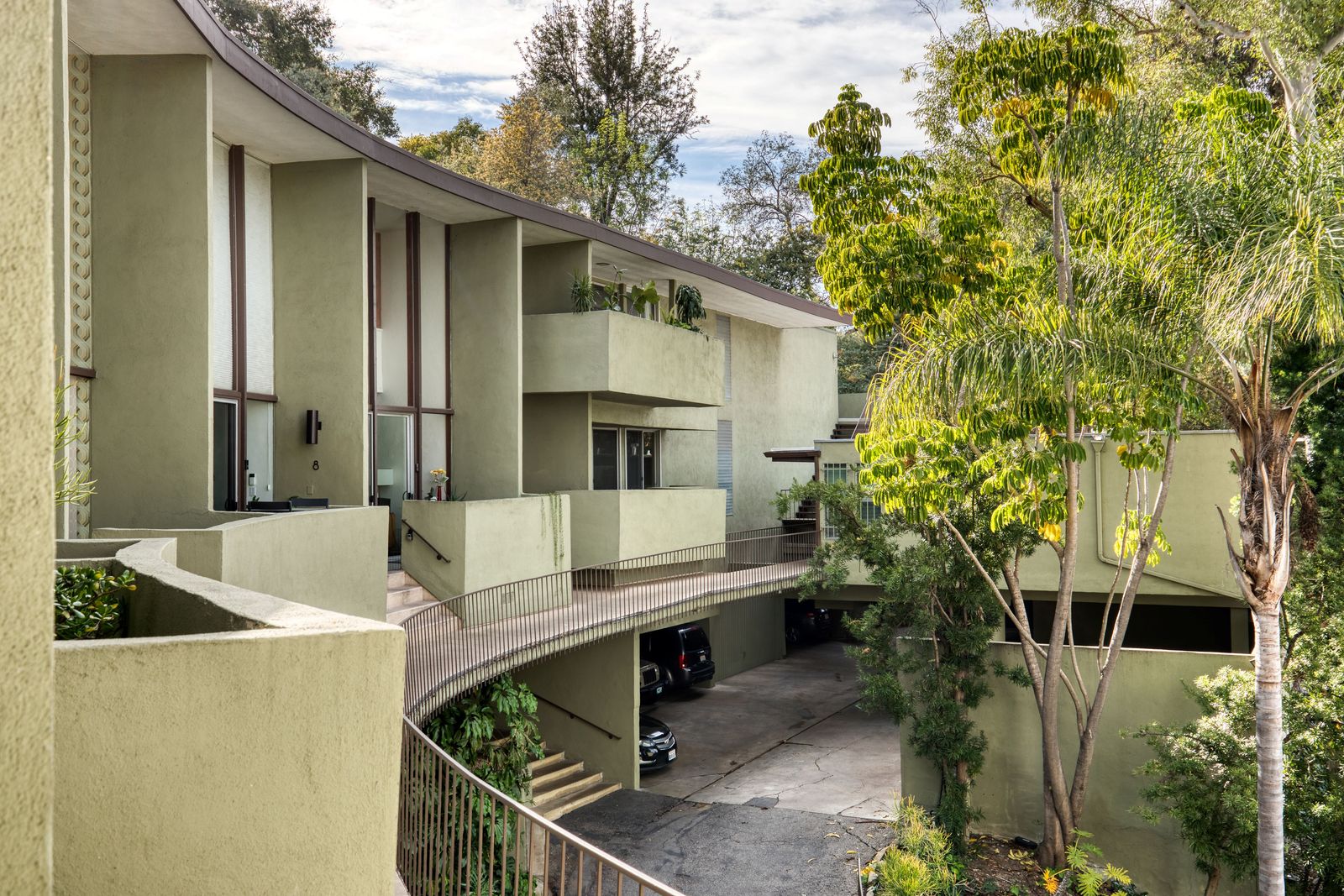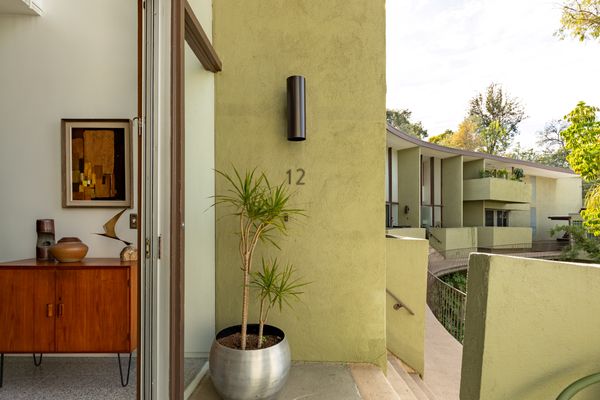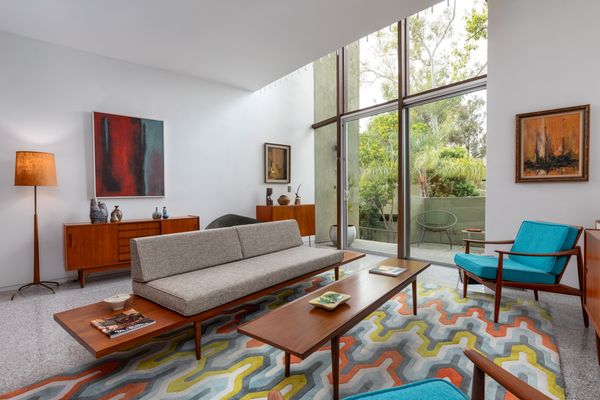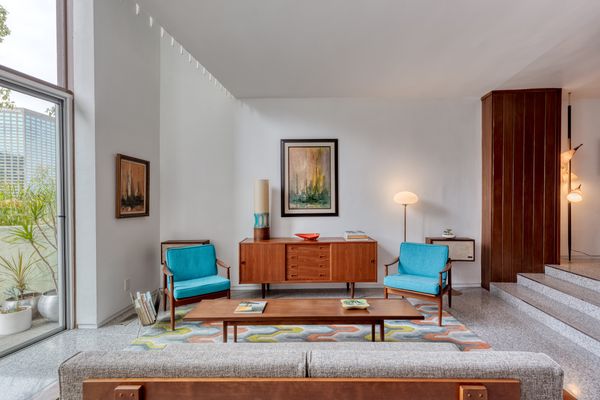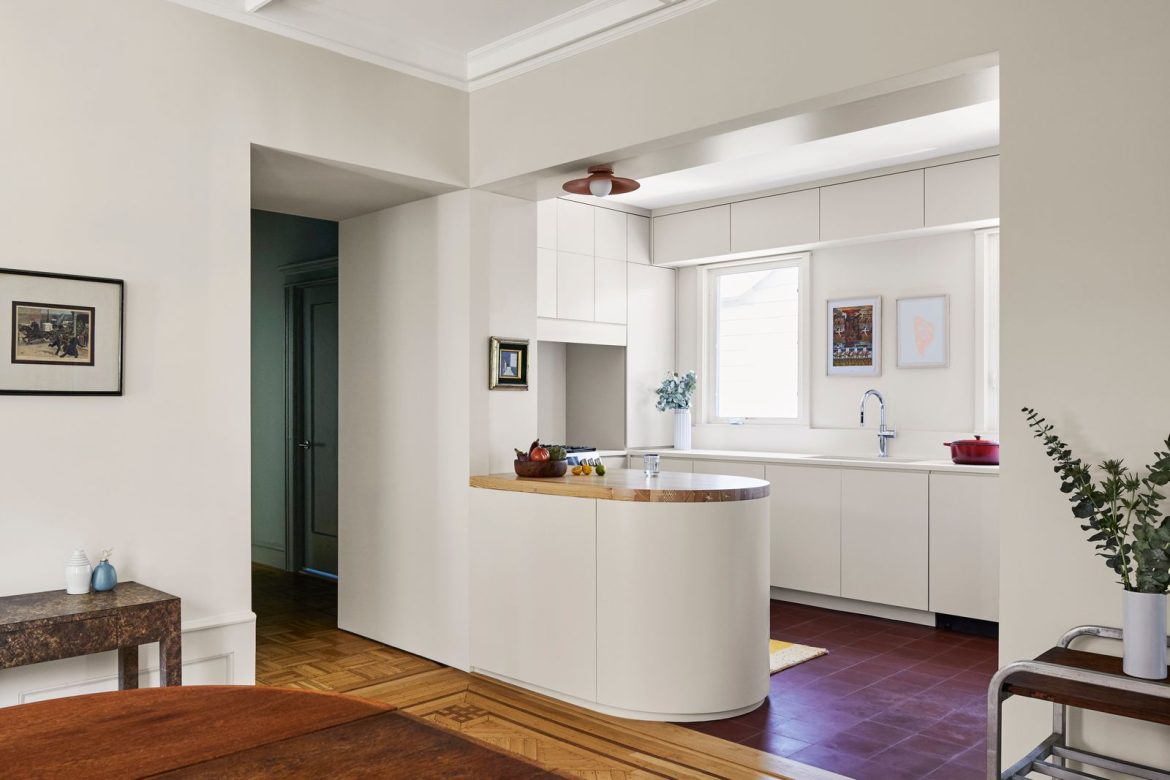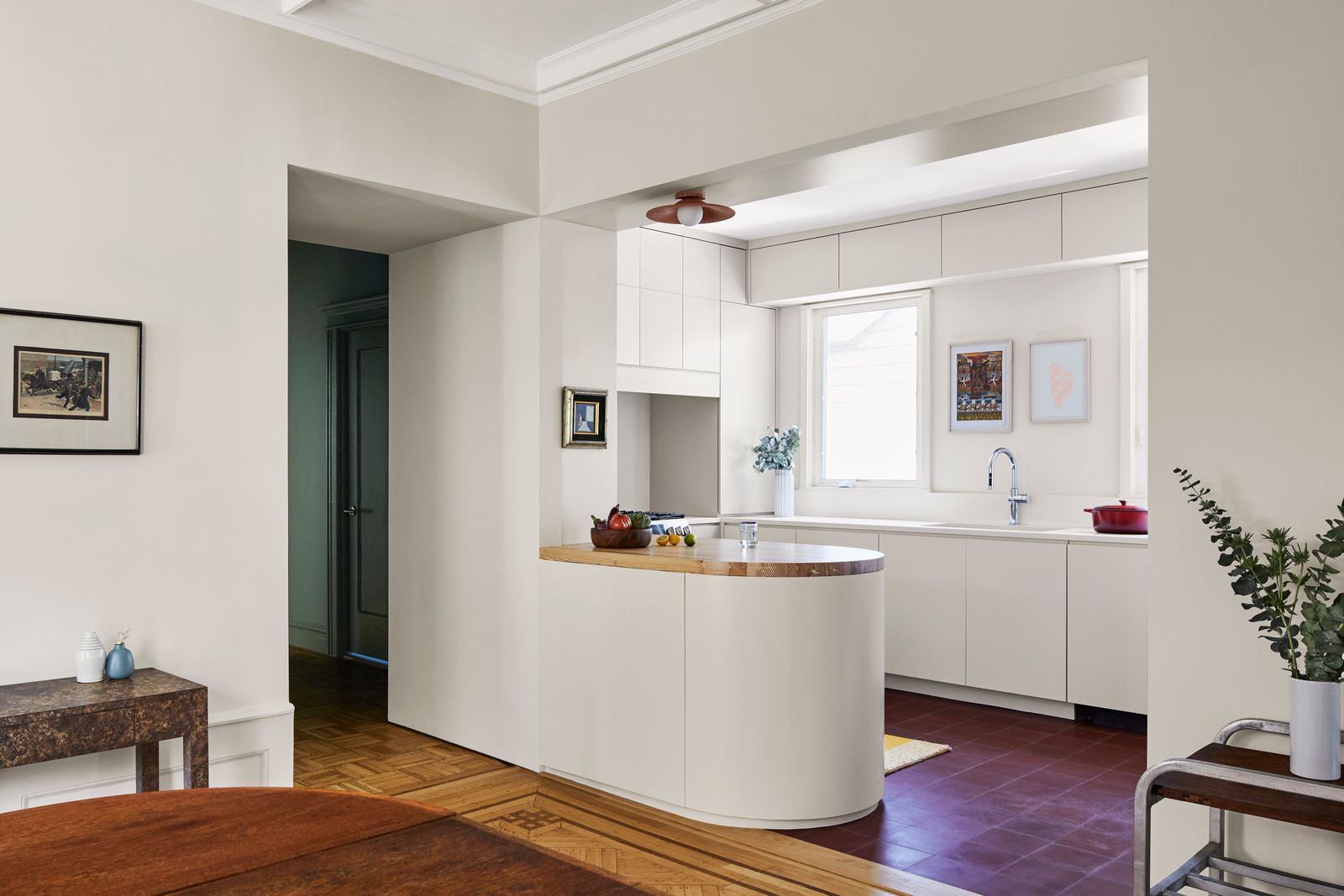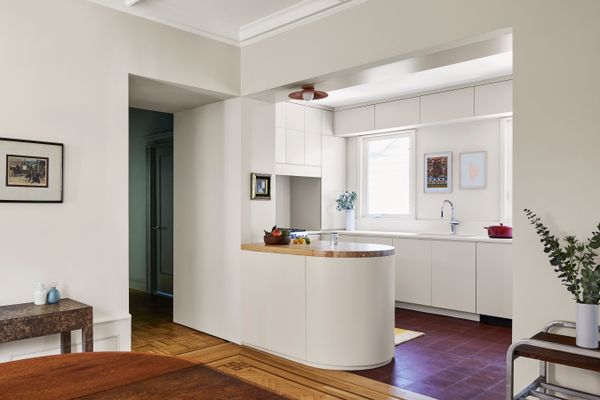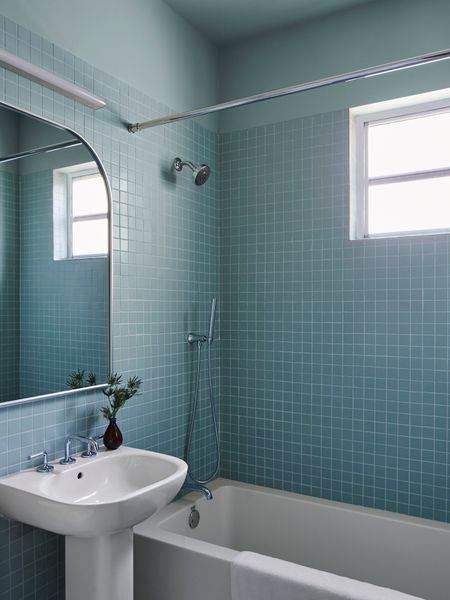The generous array, along with a rainwater harvesting system, allows the concrete residence to operate entirely off-grid.
Houses We Love: Every day we feature a remarkable space submitted by our community of architects, designers, builders, and homeowners. Have one to share? Post it here.
Project Details:
Location: Bruny Island, Tasmania, Australia
Architect: Room11 / @room11__
Footprint: 1,722 square feet
Builder: Merlin Constructions
Interior: Vipp / @vipp
Photographer: Adam Gibson / @adam.gibson.photo
Styling: Jack Milenkovic
From the Architect: “Danish design brand Vipp traveled to the southern hemisphere for the brand’s newest guesthouse. Cantilevered over a sloping hill on Tasmania’s Bruny Island, the Vipp Tunnel by Hobart studio Room11 balances beauty and brutalism.
“Balancing on the edge between solid ground and open air, Vipp Tunnel expresses a playful dialogue between concrete cubism and its organic surroundings. The 1,722-square-foot home stretches 98 feet, and wall-to-wall glass and recessed steel doors provide unobstructed views of the surrounding landscape and sea. An atrium yard separates the main living space from the primary bed and bathroom, while at one end of the home, a glass door leads to a framed terrace floating above the land.”
“A separate 377-square-foot concrete cube with 13-foot-high ceilings referred to as ‘the studio’ offers an escape to a space of visual and sensory calm. Ideal as an office space or meditation room, its spare design highlights the architecture.
“Inspired by the area’s natural phenomenon known as aurora australis, or southern lights, when the night sky is transformed into a dreamscape of color, Room11 added chromatic glazing to the building’s central skylights. Polished concrete floors and walls further enhance the effect, reflecting the ever-changing interplay of light like an ever-changing artwork.
“Vipp’s new all-aluminum V3 kitchen anchors the home’s main space. With a monumental stainless steel counter and fluted aluminum doors, the kitchen island mirrors the materiality of the building’s architecture.
“Clad with an entire facade of solar panels facing west, the structure is energy-sufficient and runs off-grid. During the design process, Room11 conducted surveys of every tree on-site and articulated roadworks around significant trees. A narrow construction corridor was established so that the impact on endemic vegetation was kept to an absolute minimum. The concrete panel design provides a thermal insulation to keep a regular temperature throughout the year, minimizing the use of heating and cooling sources. The getaway is purely run off rainwater and self-sufficient energy.”
